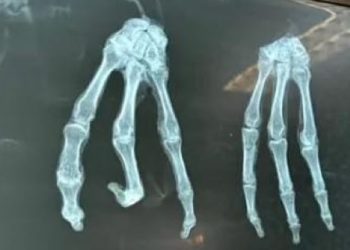A Mars-sized object called Theia collided with Earth, and this powerful impact sent Earth’s materials into space, leading to the creation of the Moon. Seismologists have been discussing two mysterious continent-sized patches deep within Earth’s mantle since the 1970s and now believe they may potentially be the result of an ancient cataclysm.
These two patches, one beneath Africa and the other in the South Pacific region, are denser than their surroundings. It’s possible that they are remnants of a cataclysm in Earth’s early history, which might have contributed to the formation of the Moon, as scientists speculated and reported on Wednesday.
This powerful collision, recently dated to around 4.46 billion years ago, sent pieces of Earth into space, eventually forming the Moon. However, remnants of Theia might still be within Earth, located just above its core.
Scientists used computer simulations to explore the impact of this cataclysm, the geophysical setup, the material that Theia was most likely composed of, and the evolution of Earth’s mantle.
Based on these simulations, they concluded that it’s possible that most of Theia was absorbed by Earth, forming these dense patches, while the remaining material coalesced to create the Moon.
“The bottoms of these patches are about 2900 kilometers beneath us. The two patches constitute about 2 percent of Earth’s mass,” said geophysicist Qian Yuan from Caltech, the lead researcher of the study published in the journal Nature.
These patches were discovered by sending seismic waves that slowed down in these two regions compared to their surroundings. Both patches are twice the mass of the Moon, he explained.
If the hypotheses of this study prove to be true, it would mean that evidence of the collision that formed Earth’s satellite lies within our planet.
“There hasn’t been a lot of consensus on whether we can find evidence for this event, not just on the Moon but in some visible features of modern Earth,” said Paul Asimow, a professor of geology and geochemistry at Caltech, and co-author of the study.
The two patches represent “the biggest departures from the standard mantle structure of Earth,” he added.
“It’s incredible because we can find remnants of another planet, Theia, if we dig deep enough into Earth’s mantle,” added astronomer and study co-author Hongping Deng from the Shanghai Astronomical Observatory of the Chinese Academy of Sciences.
The increased density of these patches is believed to result from a high level of iron – similar to the composition of lunar rocks, which makes sense if they were made from the same original material as Theia.
Gaining a better understanding of this presumed massive impact could provide insights into the evolution of Earth and other planets in the Solar System.
© 2023, The Mysterious Woods. All rights reserved. On republishing this post you must provide link to original post!










